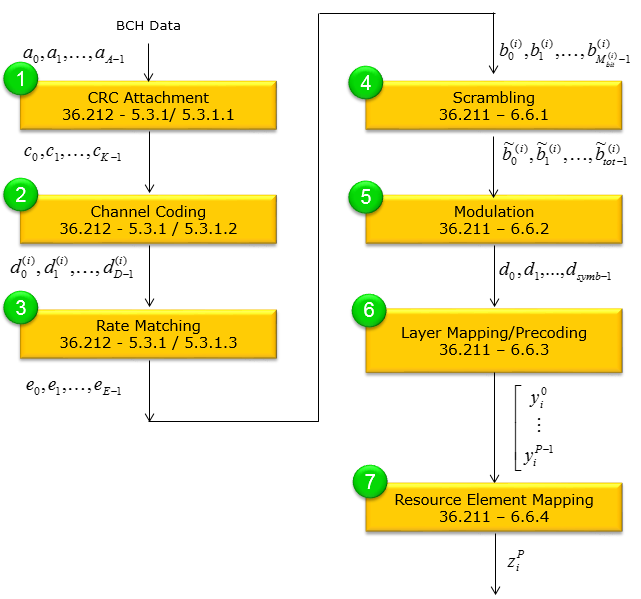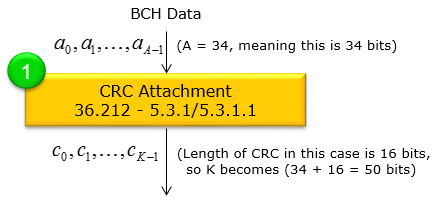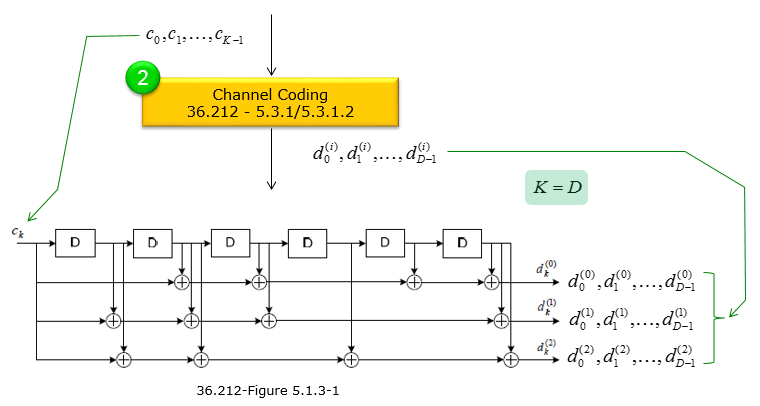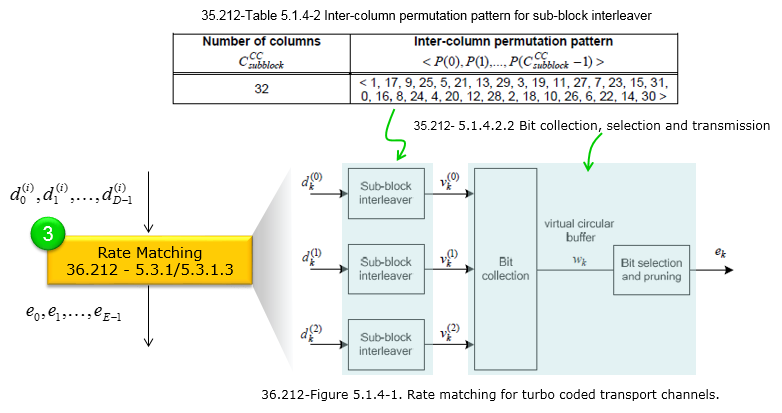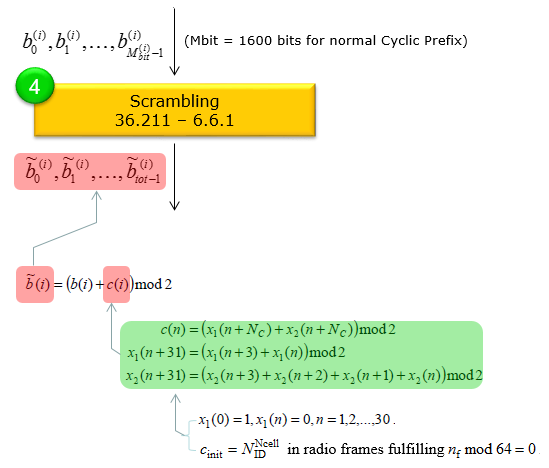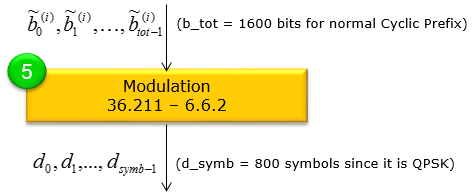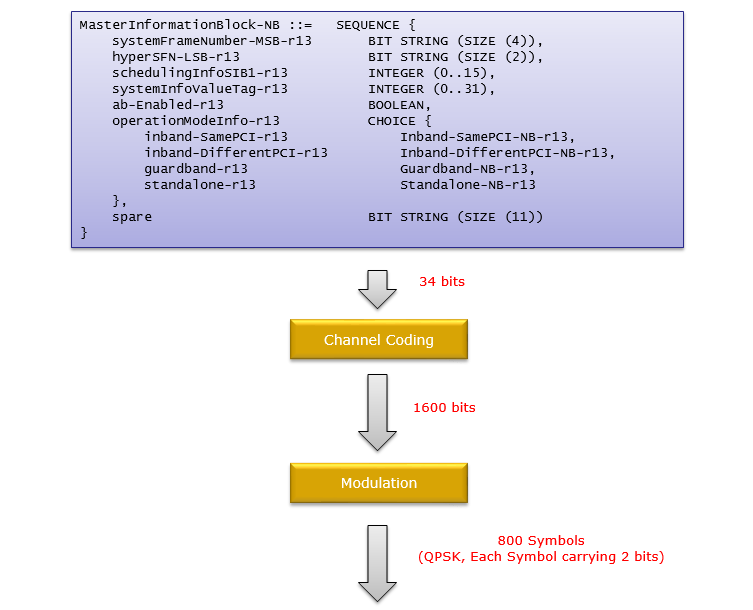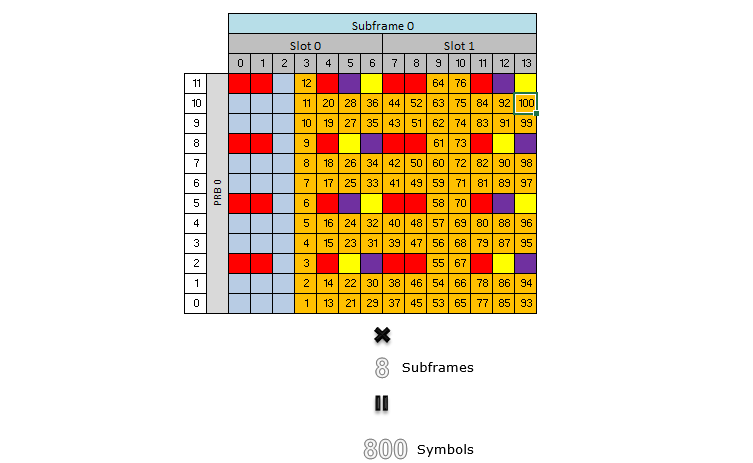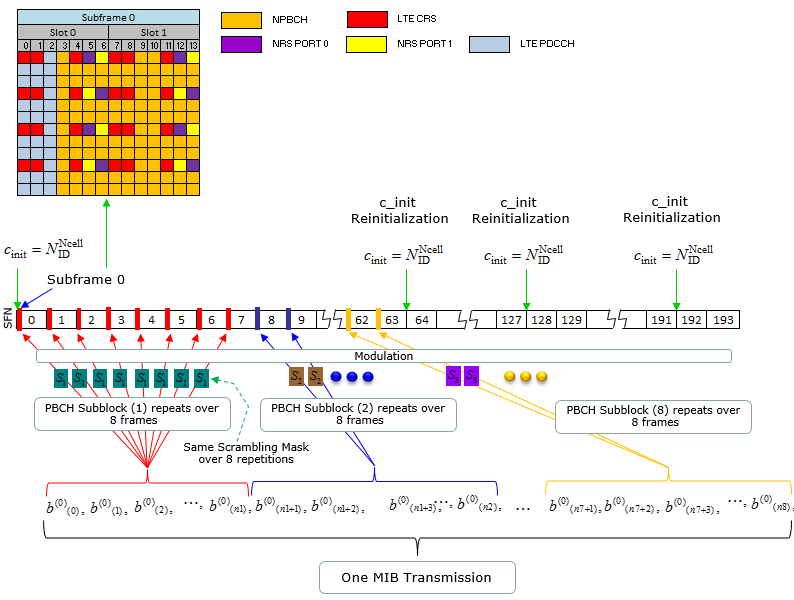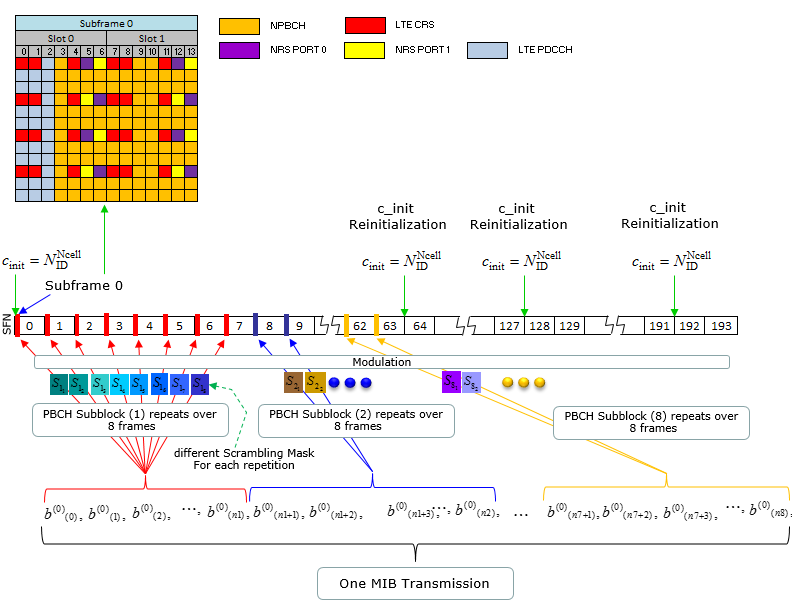|
4G/LTE - LTE NB |
||
|
NPBCH (Narrowband Physical Broadcast Channel)
NPBCH is a special channel to carry MIB and has following characteristics :
Overall channel coding process is almost same as legacy LTE (the differeces are input/output bit length of each channel coding process) and of course resource element mapping and transmission cycle/subframe will be drastically different from legacy LTE. Followings are the list of topics covered in this page.
Following is overall transport (channel coding) and phyiscal layer processing for NPBCH. In term of overall procedure, it is same as LTE. In details, the only difference is resource element mapping and transmission cycle.
NOTE : At first I did blind copy of this process from legacy LTE page and as a result, there were some incorrect numbers in the diagram and illustration due to the difference between legacy LTE and LTE-NB. Recently (Jul 2017), Mateusz Michalski from Nokia kindly shared his experties and knowledge to correct all those wrong numbers. If anybody finds anything that need to be corrected again, please let Mateusz or/and me.
< CRC Attachement : 36.212-5.3.1 >
< Channel Coding : 36.212-5.3.1>
The size of array c[] is 50 (K = 50) and output of channel coding is 150 in total(each of three d[] array is 50 bits). The coding method is based on 36.212-5.1.3.1 Tail biting convolutional coding as brielfy illustrated below.
< Rate Matching : 36.212-5.3.1 >
The UE shall assume antenna ports R2000 and R2001 are used for the transmission of the narrowband physical broadcast channel
< How many subframes to transmit a MIB ? >
Before we move into the last of PBCH processing based on 3GPP, let's pause a moment here and think of how many subframes (how many resource elements) we would need to transmit a single MIB message. If you follow through the numbers in the channel processing and modulation process and the number of resource elements that can be assigned to carry PBCH symbol data, you may easily figure out the number of subframes that are required to transmit a single MIB message. In conclusion, if we assume 'no repetition', we will need 8 subframes to transmit a MIB message. However in reality, a MIB is transmitted in 8 times of repeatition. So we will need 64 subframes to transmit a single MIB message. How (in what kind of fashion) the single MIB (PBCH) repeats for transmission ? You will find the answer in next section.
< Resource Element Mapping : 36.211-10.2.4.4 >
The biggest difference between NPBCH (LTE-NB) and PBCH (LTE) is resource element mapping and NPBCH transmission cycle. NPBCH transmission cycle can be illustrated as follows. You may read out some of the characteristics directly from this illustration as below.
Following illustration is based on my interpretation for the statements listed above. I hope I interpreted correctly, but let me know if any of you (readers) has different interpretation. Following indicate the process before the CRs mentioned above.
After the two recent CRs (R1-1703964, R1-1703913) are applied, the process has been modified as below. The key points in the CR is to apply the different scrambling mask for each transmission even for the same NPBCH subblock. Why this kind of CR is adopted ? The simple answer is that the original method turned out to be volnerable to interference when a cell is highly synchronized environment as in a MBSFN area. For the detailed explantion on this CR, refer to Ref [3] (Robust scrambling for NB-IoT broadcast channels ).
Since PBCH is the channel that carries Master Information Block, the description on MIB in 36.331 would give you a good high level description on PBCH scheduling. Followings are from 36.331 5.2.1.2a Scheduling for NB-IoT MIB scheduling.
Reference :
[1] 36.211 Physical channels and modulation [2] 36.212 Multiplexing and Channel Coding [3] Robust scrambling for NB-IoT broadcast channels
|
||
